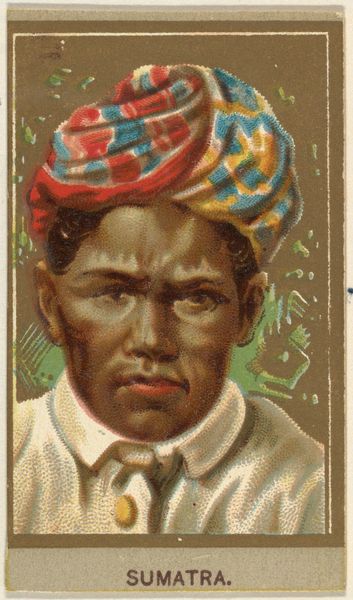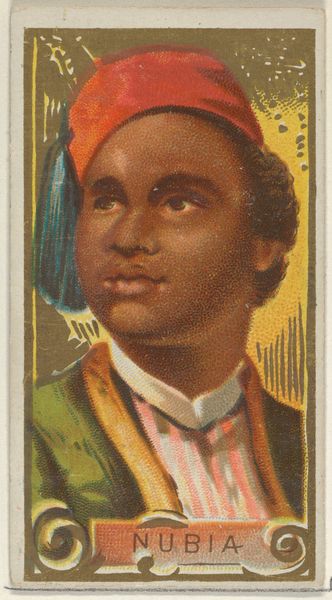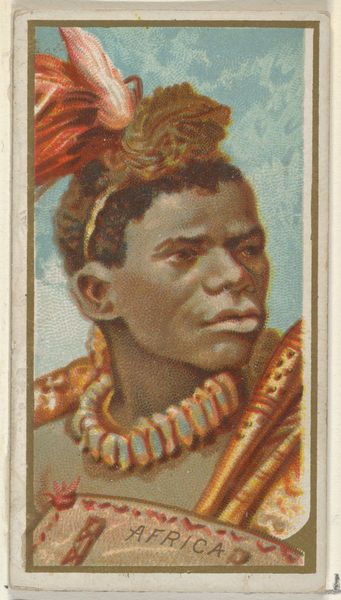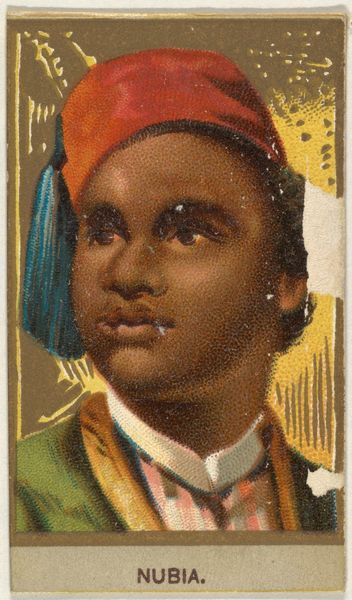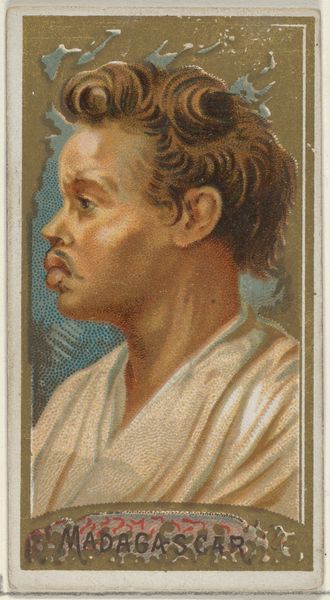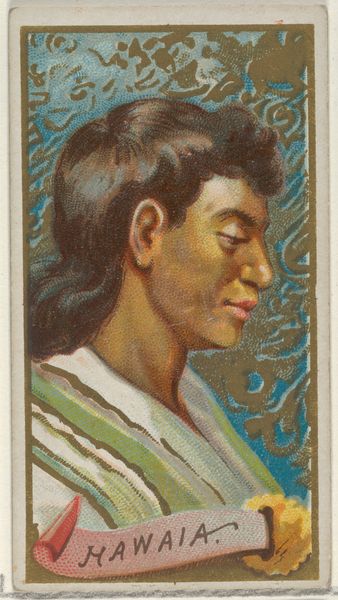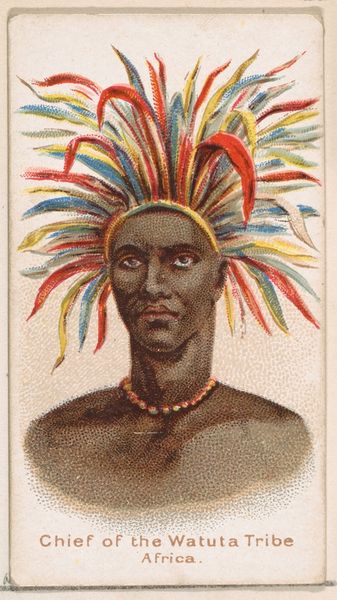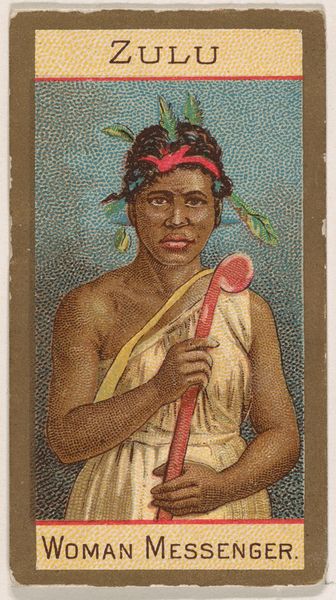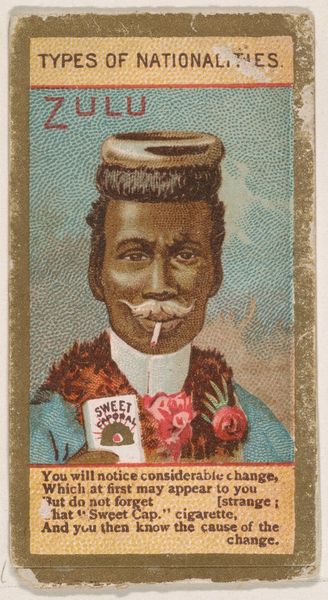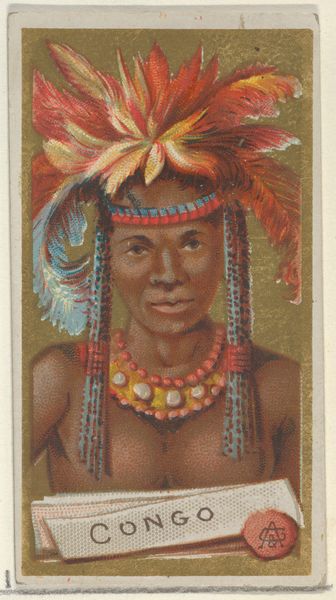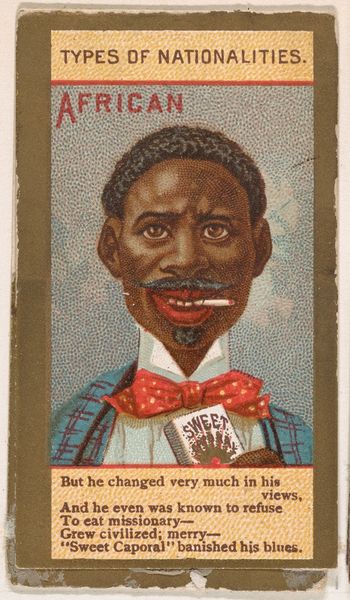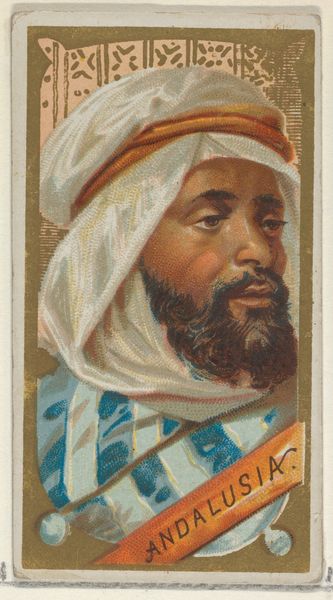
Sumatra, from the Types of All Nations series (N24) for Allen & Ginter Cigarettes 1889
0:00
0:00
drawing, print, photography
#
portrait
#
drawing
# print
#
photography
#
portrait reference
#
men
#
portrait drawing
#
portrait art
Dimensions: Sheet: 2 3/4 x 1 1/2 in. (7 x 3.8 cm)
Copyright: Public Domain
Curator: This striking card, entitled "Sumatra," comes from the "Types of All Nations" series created by Allen & Ginter in 1889 as an insert for their cigarette packs. It uses a combination of photography and printmaking. Editor: The first thing that grabs me is the subject's turban; the artist employed bright, geometric patterns which stand out brilliantly against the muted background and, quite frankly, lend an air of authority and perhaps even defiance to his face. Curator: It’s interesting you note that, given how these cards functioned. They participated in the era's visual culture of empire. Series like this were designed to both educate and reinforce a very specific worldview. These types of images had real world consequences and implications. Editor: Precisely. Looking at his face again, the furrowed brow and steady gaze contribute to a perception of him as an emblem of his nation; it's fascinating how the iconography flattens his individuality, making him representative of an entire region. Curator: That's an astute observation. And, if you think about the original context, distributed within cigarette packs, these images encouraged the consumption, both literal and figurative, of exotic lands and people by the privileged consumer. Editor: It highlights the commodification of culture doesn’t it? What looks like an innocuous portrait is in fact reinforcing unequal power structures, something the contemporary viewer is instantly attuned to. How different audiences see the world. Curator: Exactly! Objects like this act as fascinating conduits into how the burgeoning consumer culture of the late 19th-century actively constructed and propagated ideas of race, class, and global power. Editor: Understanding the symbolism, what's shown and what's omitted, illuminates the past while offering an urgent lens to interpret contemporary visual narratives, something vital as images are mass-produced every second. Curator: Agreed, analyzing this seemingly simple card reveals how deeply entwined visual culture and historical forces truly are. Editor: It really encourages a fresh perspective doesn’t it, reminding us that no image is truly neutral, carrying so much symbolic baggage from its creation and its contemporary reception.
Comments
No comments
Be the first to comment and join the conversation on the ultimate creative platform.
